Intel 11th-gen vs. 12th-gen CPUs in the Framework laptop
 Image: Adam Patrick Murray
Image: Adam Patrick MurrayIt’s universally accepted that comparing CPUs across laptops is nigh impossible. Differences in cooling and overall design between laptops make it almost impossible to separate pure CPU performance from the whole picture. When you test a laptop, you’re testing it as a sum of its parts.
But what if you could take the exact same laptop, test the CPU, and then swap out the CPU for another one? That’s what we did with the only laptop you can do that with: Framework’s upgradeable laptop.
Framework
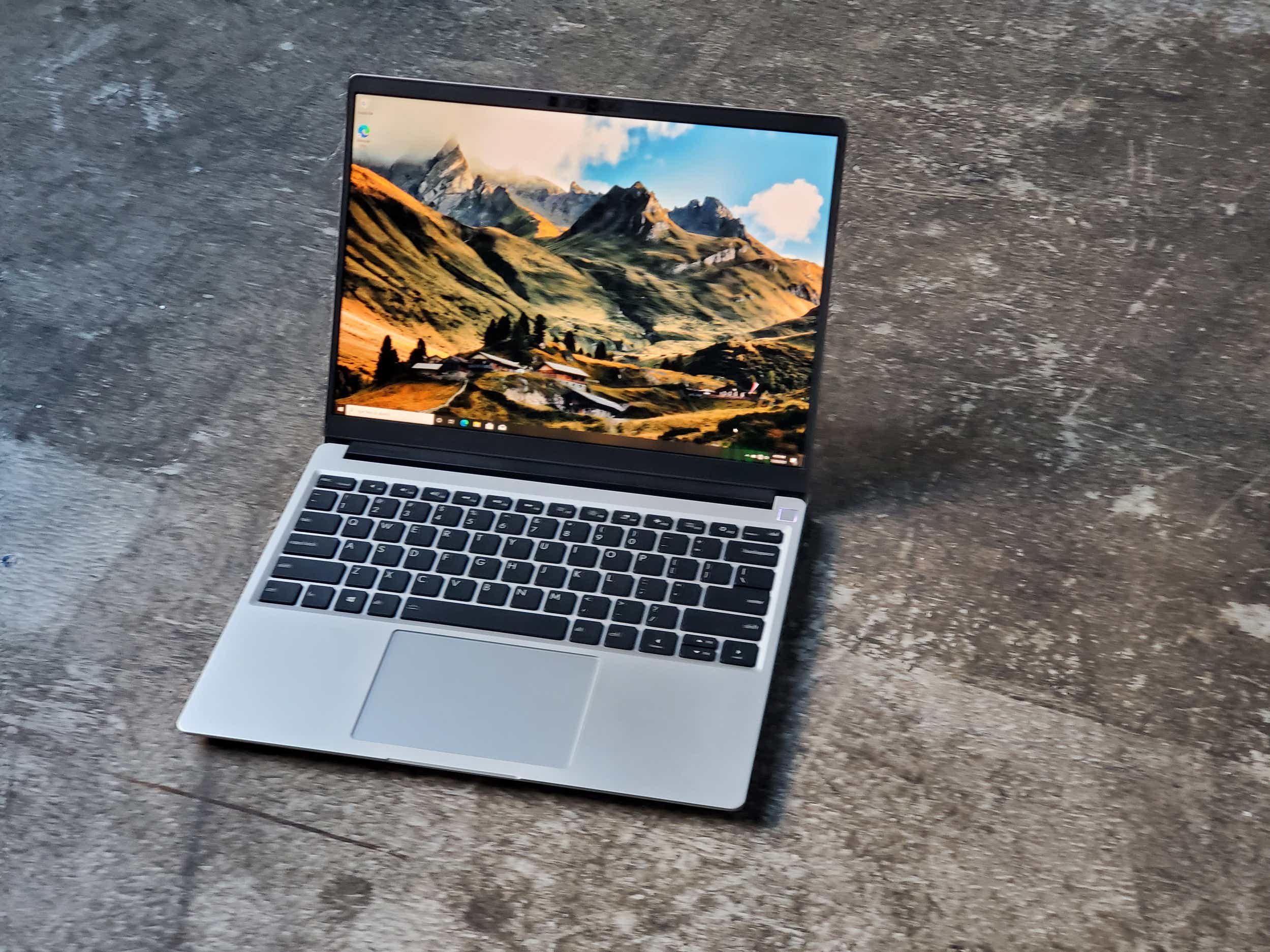 Read our reviewPrice When Reviewed:$1999Best Prices Today:$1999 at Framework
Read our reviewPrice When Reviewed:$1999Best Prices Today:$1999 at Framework
The unit originally shipped with a 4-core, 11th gen Core i7-1185G7 “Tiger Lake” processor inside of it. But recently Framework began offering Intel’s 12th-gen processors as a drop-in replacement, fulfilling its upgrade promise.
The company has three models available: the 12-core Core i5-1240P, the 12-core Core i7-1260P, and the 14-core Core i7-1280P. For this comparison we used the $699 upgrade kit with the Core i7-1260P in it, which is comparable in cost to the $799 upgrade kit with the Core i7-1185G7 available last generation.
We first tested the Framework laptop with the 11th-gen Tiger Lake chip, and then swapped in the 12th-gen Alder Lake motherboard and CPU and retested it. We used the same 16GB of DDR4/3200 in dual-channel mode, the same 1TB SSD, and even the same operating system install.
This last point isn’t typically how a proper CPU comparison would be done, but we wanted to simulate how most people actually perform upgrades. We know many people who simply swap the CPU, boot into the OS, unlock the BitLocker encryption, and carry on. That said, we uninstalled the older Intel drivers and installed the latest software available from Framework for the 12th-gen chip.
Visually, it looks as though Framework uses the same cooler on both generations of motherboards as well so as far as we can tell, the cooling between the 11th-gen and 12th-gen chips should be the same. So what you’re seeing here is the same RAM, same SSD, and the same model cooler, all in the same laptop chassis.
Multi-threaded performance

IDG
IDG
IDG
We’ll kick off our show down with Maxon’s popular Cinebench test. It’s a 3D rendering benchmark built off of its commercial Cinema4D application. We ran both the older Cinebench R20 and the newer Cinebench R23 but the results for multi-core or multi-threaded was equally impressive in both.
The 12-core Core i7-1260P outscores the 11th-gen, 4-core Core i7-1185G7 by a whopping 102 percent in the older Cinebench and an equally massive 95 percent in Cinebench R23.
Although they are similar tests, one key change is the length it takes to run. The older R20 version finishes a multi-core test in less than a minute in many laptops. The newer R23 version runs in a loop for 10 or more minutes. Reductions in performance can be attributed to the greater thermal load. Heat builds up the longer a CPU spends chewing on the task, so laptop chips are designed to throttle performance as temperatures rise. It gets a little messy to compare between versions so we also tested Cinebench R23 in its default 10 minute load, set to a single loop, to see the impact from running for 10 minutes. The result was just a 5.4 percent reduction. That’s pretty good, and an indicator that the thermals in the Framework with the 12th-gen CPU installed don’t impede performance much.
Single-threaded performance

IDG
IDG
IDG
It’s cool to see all the cores of a laptop lit up but realistically, few actual consumer workloads–especially for thin and light laptops like this–ever use that many cores. Many everyday applications hit a single core hard instead. So to get a feel for single-threaded performance, we also tested with both Cinebench versions in single-threaded mode.
This is useful as it gives us a feel for the laptop’s performance in far more common tasks in Windows, and also removes the question of one CPU having more cores than the other.
Although we don’t see see the same spectacular advantage the 12th-gen chip commands in multi-core performance, it holds a nonetheless impressive 21.6 percent lead in Cinebench R23 and 22 percent in Cinebench R20.
It’s probably not sizeable enough for everyone to feel it, but 20 percent or more in single-threaded performance is a sizeable advantage over the single-threaded performance of the 11th-gen CPU (which itself is still quite fast).
Adobe Photoshop and Lightroom Classic performance

IDG
IDG
IDG
Since most people don’t actually do 3D modeling on tiny ultraportable laptops, we want to look at some workloads that task the CPU yet are actually quite common. For that we use UL’s Procyon 2.0, which runs Adobe’s popular Photoshop and Lightroom Classic through several photo editing tasks to measure performance.
Overall, the 12th-gen CPU clocks in a healthy 16 percent advantage over the 11th gen chip. The devil is in the details though.
Although some Photoshop actions can take advantage of more cores, the vast majority of the photo editor’s functions are typically influenced by single-threaded performance. We can see that in the Image Retouch category, which sees the performance difference between the 11th- and 12th-gen chips narrow to just about 6 percent.
In Batch Processing, which measures the performance of Lightroom Classic, the 12th-gen CPU’s greater core count gives it a very robust 27 percent advantage over the 11th-gen chip.
Microsoft Office 365 performance

IDG
IDG
IDG
While Photoshop and Lightroom Classic are the 900 pound gorillas of content creation, I’d bet a box of maple bacon donuts that most people who live on thin and light laptops use Microsoft Office 365 far more often.
To look at the performance of the 11th- and 12th-gen chips there, we again used UL Procyon 2.0, which runs Word, Excel, PowerPoint, and Outlook through a gamut of workloads in a multi-tasking setting that switches between all the open applications. Interestingly, it’s about the same 16 percent advantage for the 12th-gen chip over the 11th-gen. That’s decent, but probably not enough to make an upgrade worthwhile.
Diving into each app we can see Word surprisingly sees a 14 percent bump and PowerPoint gets 8.6 percent, while Outlook narrows the difference to a mere 6.4 percent. (That tells us email is always boring even on a faster CPU.)
The big win for the 12th-gen chip, however, comes in Excel. The spreadsheet program can indeed tap into more available cores (as Excel esports master Jason Moore previously told us), and we see the 12th-gen chip with a 28.6 percent advantage over the 11th-gen processor.
Chrome browsing performance
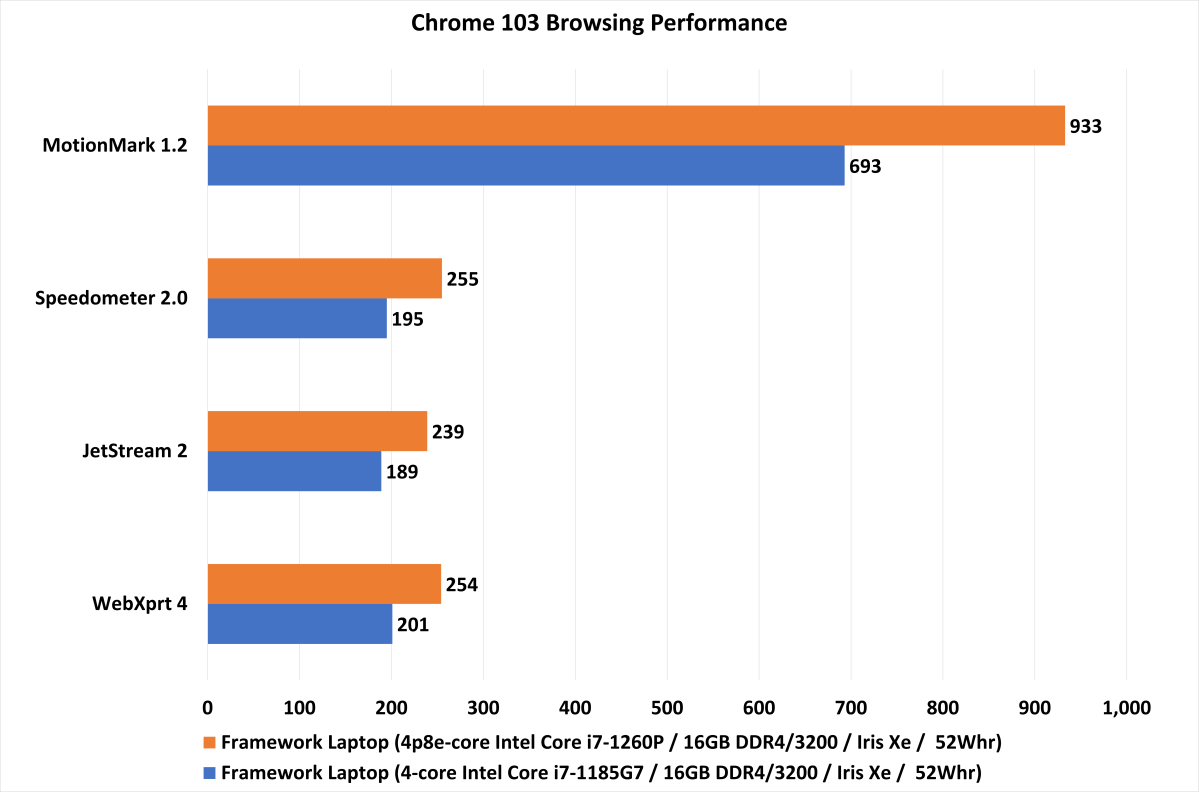
IDG
IDG
IDG
Even more common than Photoshop and Office? Google’s Chrome browser. We used Chrome version 103 and measured performance using Principled Technologies’ WebXprt 4 and three popular browser benchmarks developed by Apple’s web browser team.
WebXprt 4 runs a gamut of browsing tasks and produces an overall score, while the Browserbench.org tests dive into performance in Javascript, Webassembly, graphics performance, and web app responsiveness. The tests are generally lightly threaded, so the CPU that holds a higher clock for a longer time (or is simply more efficient) should win.
Overall, we’re impressed by the 12th-gen chip, which clocks in a 26.6 percent lead in WebXprt, 26.5 percent in Jetstream, a 30.8 percent advantage in Speedometer, and 34.6 percent in MotionMark.
This should translate into a generally snappier feel while browsing in Chrome. Again, that’s even more impressive since the 11th-gen Core i7-1185G7 is an awfully good CPU for browsing.
Graphics performance
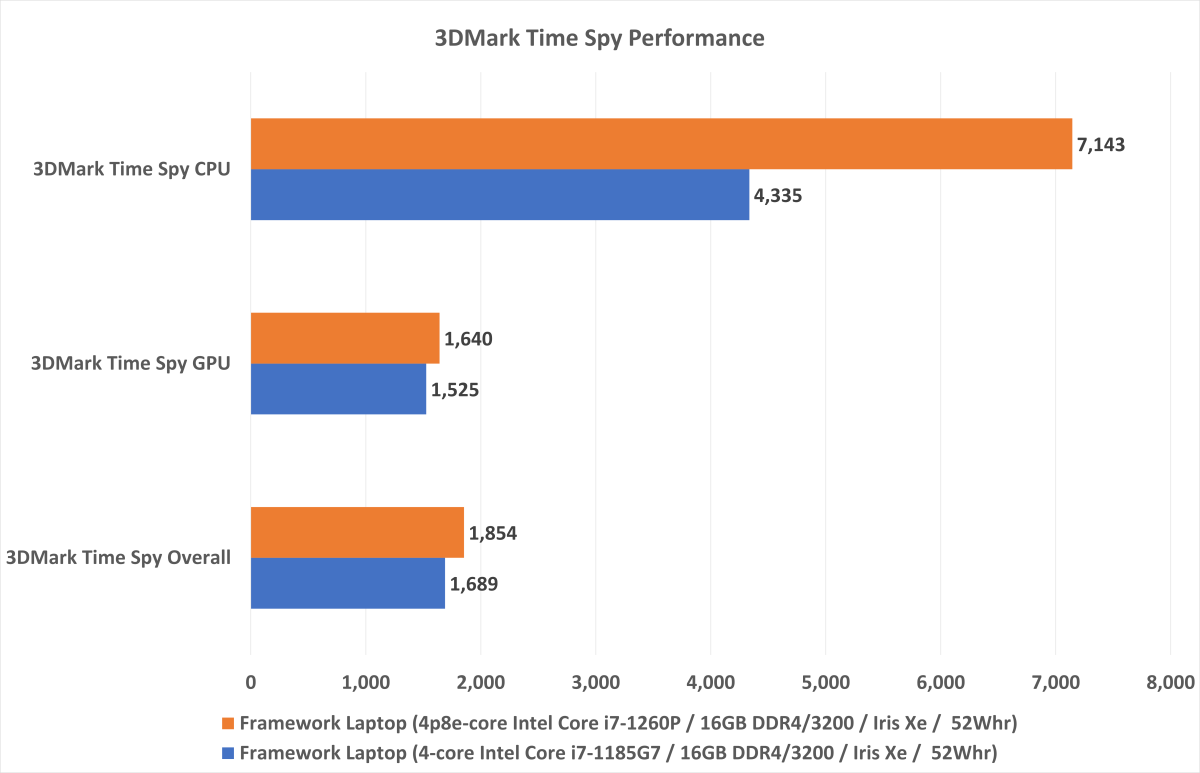
IDG
IDG
IDG
Our last performance test uses the popular 3DMark Time Spy test to look at the graphics performance of the two CPUs. Since both processors feature very similar Intel Iris Xe graphics, and both use the same DDR4/3200 memory, we didn’t expect much of a difference, and for the most part we get that. Yes, the 7.5 percent advantage to the Core i7-1260P is fair, but not a big deal at all. Time Spy also has a CPU portion that tests the PC’s performance in a “real-world” game physics engine. There you see a yuuuuuuge 64.8 percent advantage for the 12th gen’s 12-cores. We’d caution you that although the physics engine used by 3DMark is real, very few actual games will lean that heavily on all the cores of CPU.
In fact, you can see how much 3DMark Time Spy actually weights the CPU performance, because despite that 65 percent CPU advantage, the overall score is just a 10 percent advantage for the newer chip. So again, it’s no big deal.
Battery performance
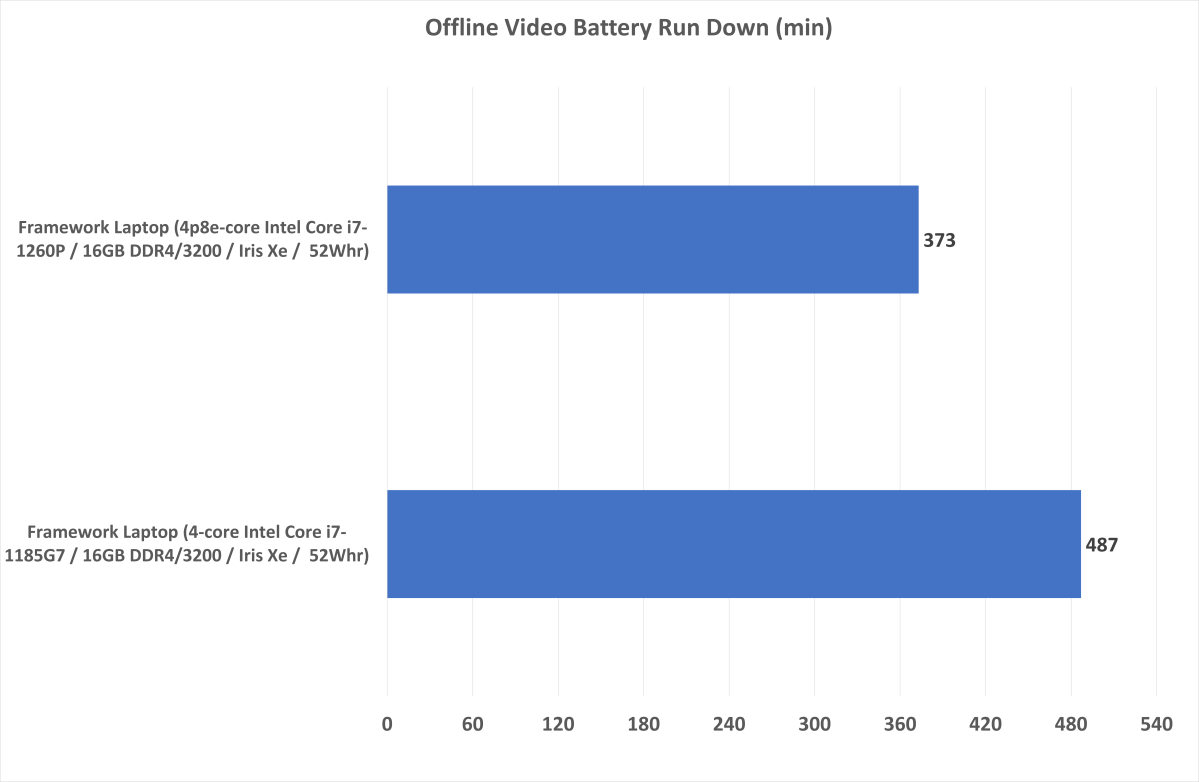
Intel 11th gen vs 12th gen performance chart
Intel 11th gen vs 12th gen performance chart
IDG
Intel 11th gen vs 12th gen performance chart
IDG
IDG
Our final test looks at battery life of the 11th- and 12th-gen Frameworks. For that, we loop a 4K H.264 video file using Windows’ Movies & TV apps in airplane mode, with ear buds inserted and the screen set to a reasonably bright 250 nits. It would be the kind of situation you’d get watching a movie on an airplane with the cabin lights on.
This is perhaps the most important test for some and we simply weren’t impressed. The Framework laptop doesn’t have the largest battery, so it’s already kind of meh in run time, but switching to the 12th-gen CPU we see a reduction in run time by 30 percent.
Remember: Same battery, same RAM, same SSD and same screen. That’s just not a good showing for the 12th-gen Alder Lake P CPU. Even more puzzling to us is a video run down test pretty much lets the actual CPU cores coast while the hardware decoding built in the media engine do all of the work. We expected basically the same performance between the two.
There are a few variables that might be at play though. Remember, we used the same OS install because that’s really how most people do “upgrades.” Was there some hiccup doing it the lazy way? We don’t know but we’re in the process of doing a clean install of Windows 11 to re-run the test just to make sure the lazy way isn’t hurting the 12th-gen chip’s results.
We will say we’ve seen a few 12th gen P-class and a U-class laptops so far, and while battery life isn’t as bad as you see with the Framework here, we’re not seeing the runtime we expected either. Those 12th-gen performance improvements definitely seem to come at the cost of endurance.
Conclusion
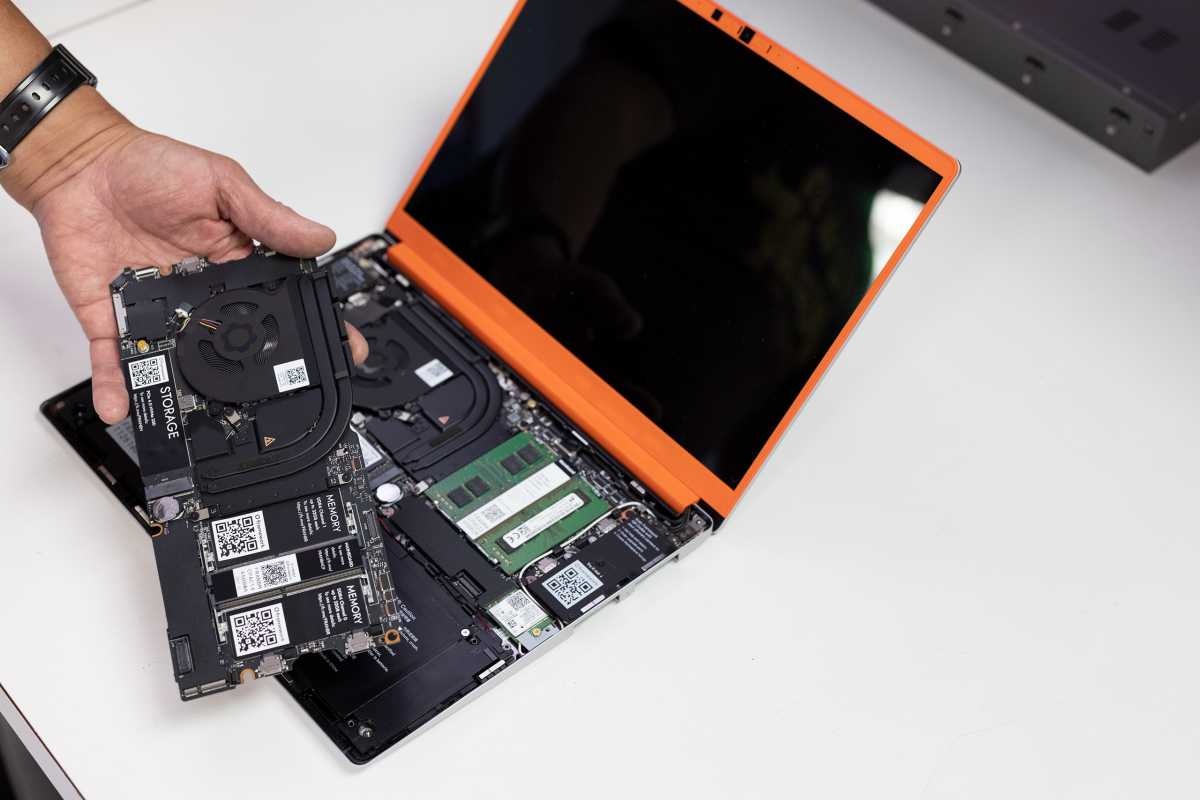
Adam Patrick Murray
Adam Patrick Murray
Adam Patrick Murray
All of the results you’ve seen address two situations. The first is for actual Framework laptops owners questioning whether to do an upgrade of the original laptop, and whether it’s worth it. From what we’ve seen, we can say that if you do tasks that need more cores than the original Core i7-1185G7, the answer is a resounding yes. Lightroom Classic, 3D modeling, and advanced Excel will yield a fairly sizeable boost in performance, leaving the quad-core far behind. You even actually get fairly impressive performance boosts on light chores such as in a browser, Word, or PowerPoint.
Framework
 Read our reviewPrice When Reviewed:$1999Best Prices Today:$1999 at Framework
Read our reviewPrice When Reviewed:$1999Best Prices Today:$1999 at Framework
People who do light duty tasks on a Frameworks laptop probably can’t justify the upgrade. For $700, you are getting more performance, but probably not enough to be worth your while. A heavy-duty user, however—where time equals money—probably can justify it.
The same conclusions likely apply to those with 11th-gend laptops from other makers as well.
Generally, most people who putter around on the web and spend most of the time crafting documents or email in Office should probably not upgrade, as it’s hard to justify the performance.
But for those who do need more than the 4-cores of an 11th gen Core i7-1185G7 can provide, the performance boosts offered by the 12-core Core i7-1260P are real.
Author: Gordon Mah Ung, Executive Editor

One of founding fathers of hardcore tech reporting, Gordon has been covering PCs and components since 1998.
Recent stories by Gordon Mah Ung:
Meet LPCAMM2, the fast and efficient new laptop RAM of the futureI’m not afraid of Qualcomm’s Snapdragon X ElitePC maker offers a potential fix for crashing Intel CPUs







